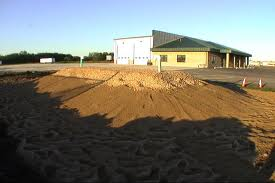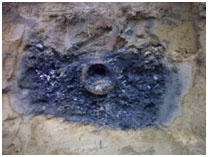Raised Filter Bed
 Since soils are frequently too hard, too wet, or you are living in an area surrounded by solid rock such as the Canadian Shield, you must have another option for a septic bed. The OBC allows for Filter Beds and Fill Based Absorption Trenches.
Since soils are frequently too hard, too wet, or you are living in an area surrounded by solid rock such as the Canadian Shield, you must have another option for a septic bed. The OBC allows for Filter Beds and Fill Based Absorption Trenches.
These beds can be built upon heavy clay, solid rock and high ground water tables. To do this, you must bring in a lot of sand and then build a small septic system on top of the sand that you just brought in.
Other than requiring a lot of sand and trucking, there are a few down-sides to these systems. They are also known as Mound Systems due to all of the sand that they are mounded upon.
Because the waste strength entering the Filter Bed is quite high, and is concentrated in a very small area, these systems often blow-out prematurely due to biomat growth. The photo below shows heavy biomat growth in the stone and sand and in the tile itself. When you force a large amount of waste to be treated in a small area, you end up with a short life span.
 Where you may get 25 years of life from a conventional bed, you may end up with only 10 years from a raised filter bed or a Fill Based Absorption Trench, and you end up buying a new system again.
Where you may get 25 years of life from a conventional bed, you may end up with only 10 years from a raised filter bed or a Fill Based Absorption Trench, and you end up buying a new system again.
Benefits of Raised Filter Beds
Most inspectors, designers and engineers are very familiar with raised filter bed designs. This makes it easier to get approvals when building permit application drawings are submitted.
Ontario has permitted raised filter beds for over 40 years.
Because regulators have written them into the building code there are currently NO MAINTENANCE AGREEMENTS REQUIRED BY HOMEOWNERS to have to worry about after the installation. This is the main benefit of installing a raised filter bed instead of a tertiary system.
The size of a raised filter bed can be prohibitive since THEY ARE AS MUCH AS TWICE THE SIZE OF TERTIARY SYSTEMS.
However, if size is not a problem if you have a large property, and you don’t mind having a “hump” on your property, then a raised filter bed may be best for you!

